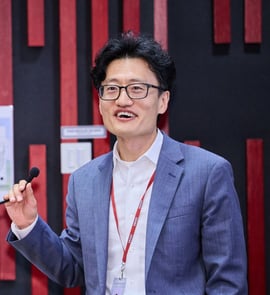A Masterclass for Youth
to Learn Scientific Research
2 hours, 3 Stories
Build Curiosity into a Habit . Ask Better Questions . Develop Research Skills
CuriosityCode
We understand human beings are not scientific intuitive, we use narratives as the primary way of thinking and communicating, which is why we use stories to teach youth about scientific research.
Scientific Research Made Simple
if you want to do a science fair poster, a research paper or innovation competition, but don't know where to start
if you feel intimated and confused with abstract and complex scientific research mechanisms.
this workshop is for you
if you are course fatigue and don't want another lecture after school. you want learning by doing a tangible projects.
if you desire to explore academic interests with guidance, but don't want to be molded into the traditional discipline boxes.
Here is How We Do it
Learn scientific research through Stories. We dissect stories to illustrate how research ideas are initiated, framed, analyzed, evidenced, written, presented, criticized, revised, extended, and published, cited applied!
Build curiosity into a powerful everyday habit: learn to observe the world; ask better questions;
Instead of asking students to pick predefined academic labels such as “STEM,” “humanities,” “art and design,” “economics”, we helps them raise research questions by focusing on real-world problems — the way modern science and innovation actually work.
1
2
3


Meet Your Guide
Hi, I’m Jinhua — a MIT professor and a father of two teens. When my kids started high school, I asked myself: Can scientific research be made simple enough for a 14-year-old?
I found most teen research programs online miss the mark — flashy programs promising 100% publication rates and shallow shortcuts that lower standards.
Other research courses overwhelm students with abstract jargons and force them to pick a field before they’ve even figured out what excites them.
But real-world problems — like climate change, energy efficiency, food waste — don’t live in neat academic discipline boxes, and neither should learning.
Albert Einstein once said “Everything should be made as simple as possible, but not simpler.” My goal is to make scientific research simple without lowering the standards. This course teaches youth to think like a real scientist — to spark curiosity, ask better questions, solve real problems, and build confidence doing it.
If you want your teen to learn how to think, not just follow templates — this is for you.
Working with me 1-on-1 is out of reach and extremely expensive for most people. With an online workshop, I am making it accessible for you.
What's covered
How are ideas born and what is a good scientific question? A set of scientific methods at different levels of complexity and what’s feasible for young researchers?
Learn Scientific Research Through Stories
Story 1: Unreturned Trays: 30 Theories to Explain One Behavior
Ignite curiosity: observe and ask questions.
Seeing the world as a researcher
Stakeholder analysis. Who cares about your research?
Full cycle of a paper: how research ideas are initiated, framed, analyzed, evidenced, written, presented, criticized, revised, extended, and hopefully published, cited and applied!
Action 1: Write a counterpart story of “Unreturned Trays” in your own life:…family, school, neighborhood, city, and society.
Story 2: Is Uber Making Our Cities More Sustainable?
How are ideas born? What is a good research question? The CRISP Standard
Four components and five steps of research
Stand on the shoulders of the giants: literature review
Refine research questions iteratively
Venn diagram: your idea as the center of the world
Action 2: Develop three research ideas of your own (with a CRISP template provided). Refine your three ideas using literature. Evaluate them against CRISP and select your favorite
Story 3: An Experiment on MIT Campus: Fighting Climate Change
Method: Experiment, Randomized Control Trial and Causal Inference
Method: Data Measurement, questionnaire survey
Integration: Questions, Literature, Data, Analytics, and Results
Action 3: Design an experiment or a questionnaire, find data and define the measurement in your research; Your research proposal
Gain curiosity, clarity and confidence in this 2 hour Masterclass.
Through 3 stories, Students will walk away with:
Clear blueprint of how scientific research ideas are initiated, framed, analyzed, evidenced, written, presented, criticized, revised, extended, and hopefully published, cited and applied!
Research questions that you will develop on your own
Framing a research proposal substantiating your chosen question
Curiosity to do more...
Contacts
jinhua@jzresearch.org